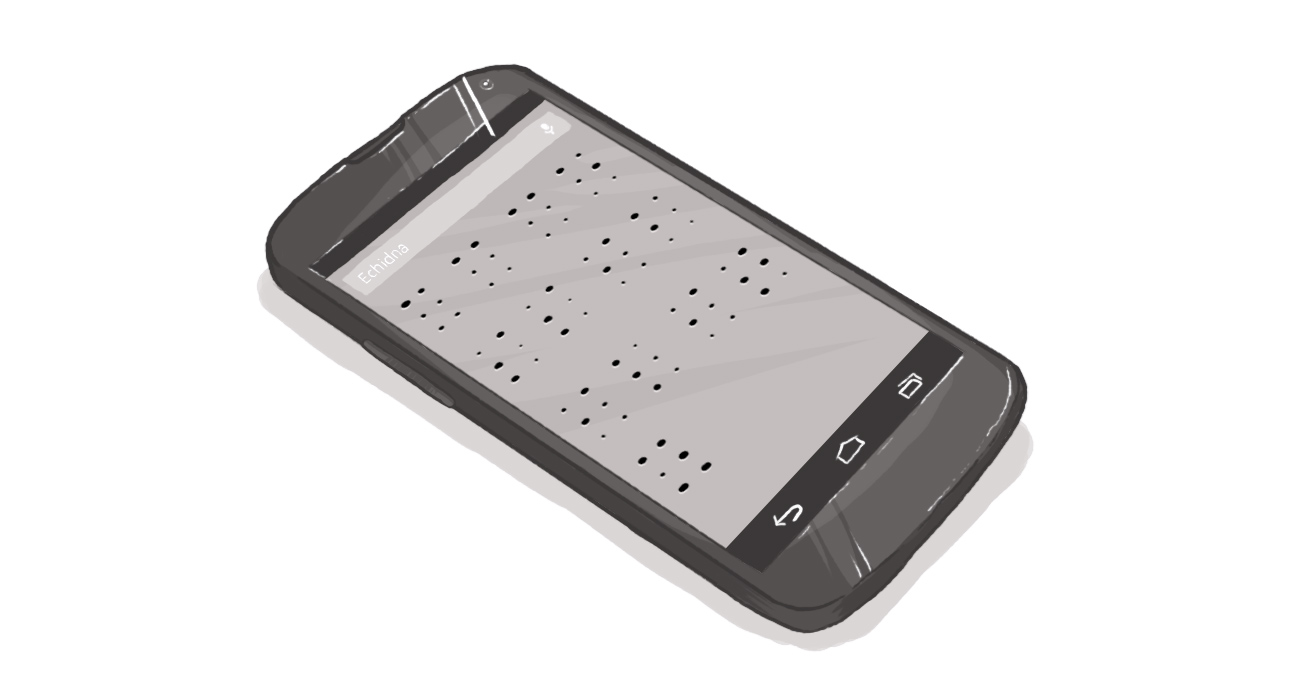App Shows Potential of Braille in the Digital World

While most of the technical innovations that have had a profound impact on my life have been hardware-based, imagine my excitement when my newest cause of profound change was a third-party iOS application. It's an app that not only solves a lot of problems today, but has the potential to open up exciting new possibilities for future generations of students.
In the past, for me, revolutionary change has come through hardware: the electronic note taker which allowed me to submit printed assignments to my teachers rather than hard-copy Braille ones with handwritten transcriptions; or the iPhone, which opened up new possibilities for me without the usual purchase of third-party specialized text-to-speech software.
But it's an app that has revealed an opportunity for incredible future growth and potential. I'm referring to MBraille, an app that allows users the ability to enter Braille characters into an iPhone, iPod, or iPad, and have them instantly translated into print.
Before I sing the praises of MBraille, let me explain why it's such a revelation in comparison to what else is out there.
I'd previously heard talk of Braille entry apps before, but hadn't given the idea much thought. If I really wanted Braille entry, why wouldn't I just get an external Braille display? That way, I'd have Braille output as well. As well, Siri allowed for dictation into the phone and there was always my Bluetooth keyboard to type longer messages if necessary.
However, the ability to send longer messages more often was becoming more important. I wanted to keep in better contact with those I cared about and I wasn't able to do so with the status quo. And while I've drooled over Braille displays, seeing them improve and drop in price -- I didn't think a price point north of $1,000 for even a 12-character display was justifiable for something I didn't perceive as a true need.
Dictation was OK, but editing mistakes took time. And dictation wasn't possible on a loud bus or desirable when I wished to keep the content of my messages private. The Bluetooth keyboard wasn't practical to commute with if one already had a handbag and knapsack to hold on one's lap.
So I took the plunge and downloaded MBraille and BrailleTouch, two apps with similar purposes. MBraille quickly won out: it had options for multilingual input, accepted contracted Braille (Braille containing abbreviations for faster reading), and the setup of the six dots of the Braille cell as a V shape felt more natural.
MBraille can also launch apps. I need only type a message, then type ".sms" and the name of a contact or a phone number on its own line. When you begin another new line, the Messages app opens with the given number in the recipient list and the message in the appropriate text field, awaiting my tapping of the Send button. Once tapped, the Messages app is closed and I'm returned to MBraille.
I can perform similar actions to send email, post to Twitter or Facebook, get directions from the GPS app BlindSquare, open WhatsApp, or perform a Google search. Even better, any text entered into the app is automatically copied to the clipboard upon exiting, which allows for it to be quickly and easily pasted into the text field of another app such as Notes or a text editor.
The implications for this app are huge. If I can enter Braille in many languages, what's to prevent math or music notations (completely different systems of Braille) from also being entered this way? There is not yet a reliable means to translate this material from Braille to print, so this could be a game-changer in classrooms from Kindergarten to post-secondary. With Apple's suspect Braille integration, this could allow students completely equal access to curricula.
With the ability to run MBraille as something of a command-line client, could this spell wider applications for iOS users? Though the idea of a text entry environment in Apple's famous graphical user interface arena might be something of a sacrilege, it may benefit those who don't wish to hunt and peck for an app of their choice by giving them the ability to open an app directly from MBraille.
I am excited about the possibilities this app could bring. I am always eager to incorporate more Braille into daily life, and I am heartened to see that this is becoming possible with apps like MBraille.
What do you think? Could this work? Or is the idea of a Braille entry app too much of a niche market need to take off? Give me your thoughts below.
What Braille apps are available?
What accessibility tools are available for people using Braille?
SUBSCRIBE TO OUR E-NEWSLETTER
 Subscribe
Subscribe


